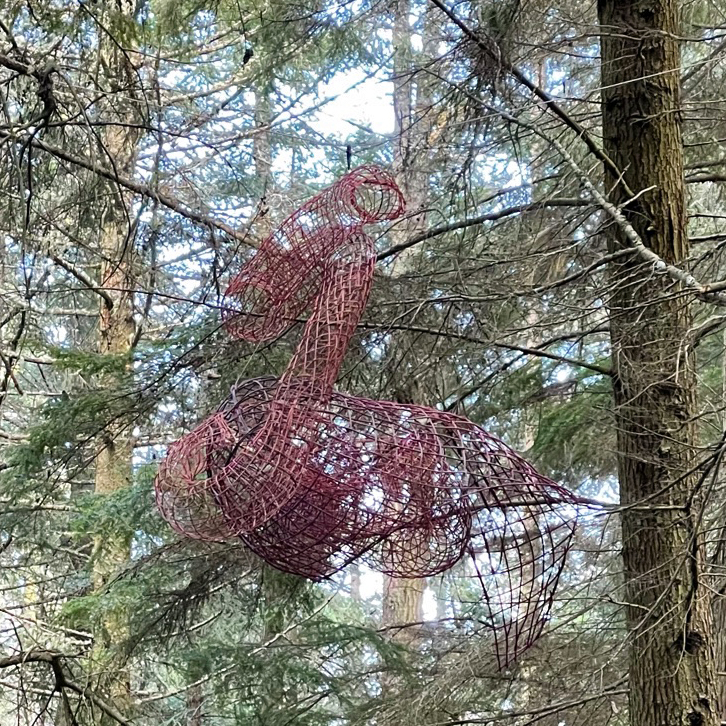SUMMARY
Abigail Maxey is a Seattle artist who returned to visual arts after working in theater for many years. She uses the traditional art-craft of basketry to create large sculptural pieces in non-traditional shapes. Reed is woven in an open weave pattern and tied with waxed linen to reinforce the connecting joints. This piece is hung from a single point, allowing it to further integrate into the environment by rotating and swinging in the breeze. Knots represent Abigail’s interpretation of the tension she feels in her life due to politics, pandemics, and the environment, in addition to the usual daily burden we carry. Her open weave technique allows you to explore the path of a knot by seeing through individual layers. She encourages interpretations beyond a knot form, too. The sculpture is further entwined within the complex visual background of branches.
ENTWINED 6
ABIGAIL MAXEY
ABOUT THE SCULPTURE
Abigail uses the traditional art-craft of basketry to create large sculptural pieces in non-traditional shapes. Reed is woven in an open weave pattern and tied with waxed linen to reinforce the connecting joints. The process allows her to create lightweight yet surprisingly strong structures. This piece is hung from a single point, allowing it to further integrate into the environment by rotating and swinging in the breeze.
Knots are her fascination. They are her interpretation of the tension she feels in her life due to politics, pandemics, and the environment, in addition to the usual daily burden we carry. By enlarging a knot, she hopes to transform our perspective to explore the path of the tangle. The open weave technique creates skeletal tessellations and allows the viewer to explore the path of the knot by seeing through individual layers. Transforming raw materials by manipulating them into a sculptural knotted form using a very controlled process creates a visual conflict of control versus chaos, further highlighted when seen in the forest environment with a complex background.





